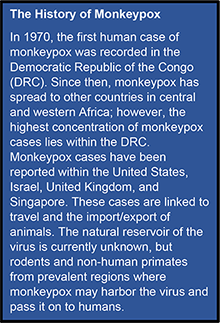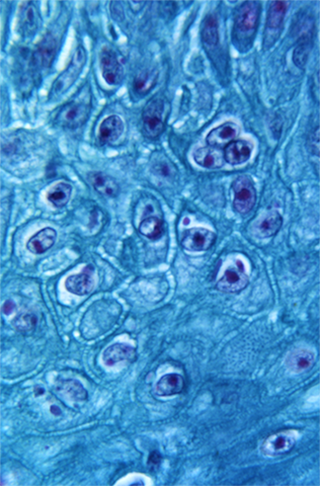The emergence of a virus known as monkeypox has raised many questions, most notably: Is this the new pandemic?
According to The Centers for Disease Control and Prevention (CDC), monkeypox is a double-stranded DNA virus belonging to the Orthopoxvirus genus and the Poxviridae family. Scientists first documented the virus in animals in 1958, when two outbreaks of smallpox-like disease occurred in monkey colonies for scientific research.
 Some of the most common symptoms include typical flu-like symptoms within the first three days of infection. Patients then will begin to develop a rash and lesions that can be anywhere on the body but tend to be more concentrated on the face and extremities. As the disease persists, the rash evolves from a macule to papules, vesicles, pustules, then finally into scabs which will dry up and fall off. These generally serve as clear-cut signs of monkeypox.
Some of the most common symptoms include typical flu-like symptoms within the first three days of infection. Patients then will begin to develop a rash and lesions that can be anywhere on the body but tend to be more concentrated on the face and extremities. As the disease persists, the rash evolves from a macule to papules, vesicles, pustules, then finally into scabs which will dry up and fall off. These generally serve as clear-cut signs of monkeypox.
The good news is that despite these uncomfortable symptoms, more than 99 percent of those infected with monkeypox are likely to survive.
According to the CDC, the transmission of monkeypox is limited to physical contact with infected animals, people, or materials. Consequently, as it stands now, there is little risk for the emergence of monkeypox to escalate into a full-blown pandemic.
Common-sense prevention methods include awareness of the virus’ signs and symptoms and avoiding physical contact with infected individuals. In research or medical settings, standard protocols such as wearing proper personal protective equipment can prevent contamination.
Thorough hand washing with soap or using an alcohol-based hand sanitizer is typically effective in eliminating any potential viral residue. Use alcohol-based wipes to clean surfaces that may have been in contact with infected individuals.
As we have learned with other communicable viruses, patients with severe diseases, immunocompromised individuals, children under the age of 8, and pregnant or breastfeeding women should exercise increased caution.
Currently, no treatment options are available for monkeypox, but the CDC lists several smallpox vaccinations as effective countermeasures:
- Tecovirimat (TPOXX)
- Cidofovir (Vistidae)
- Vaccinia Immune Globulin Intravenous (VIGIV)
- Brincidofovir (Tembexa)
Ultimately, there is a low risk of monkeypox infection becoming another pandemic. With effective prevention protocols and the availability of adequate countermeasures, we can ensure that a virus does not uproot our lives once again.


